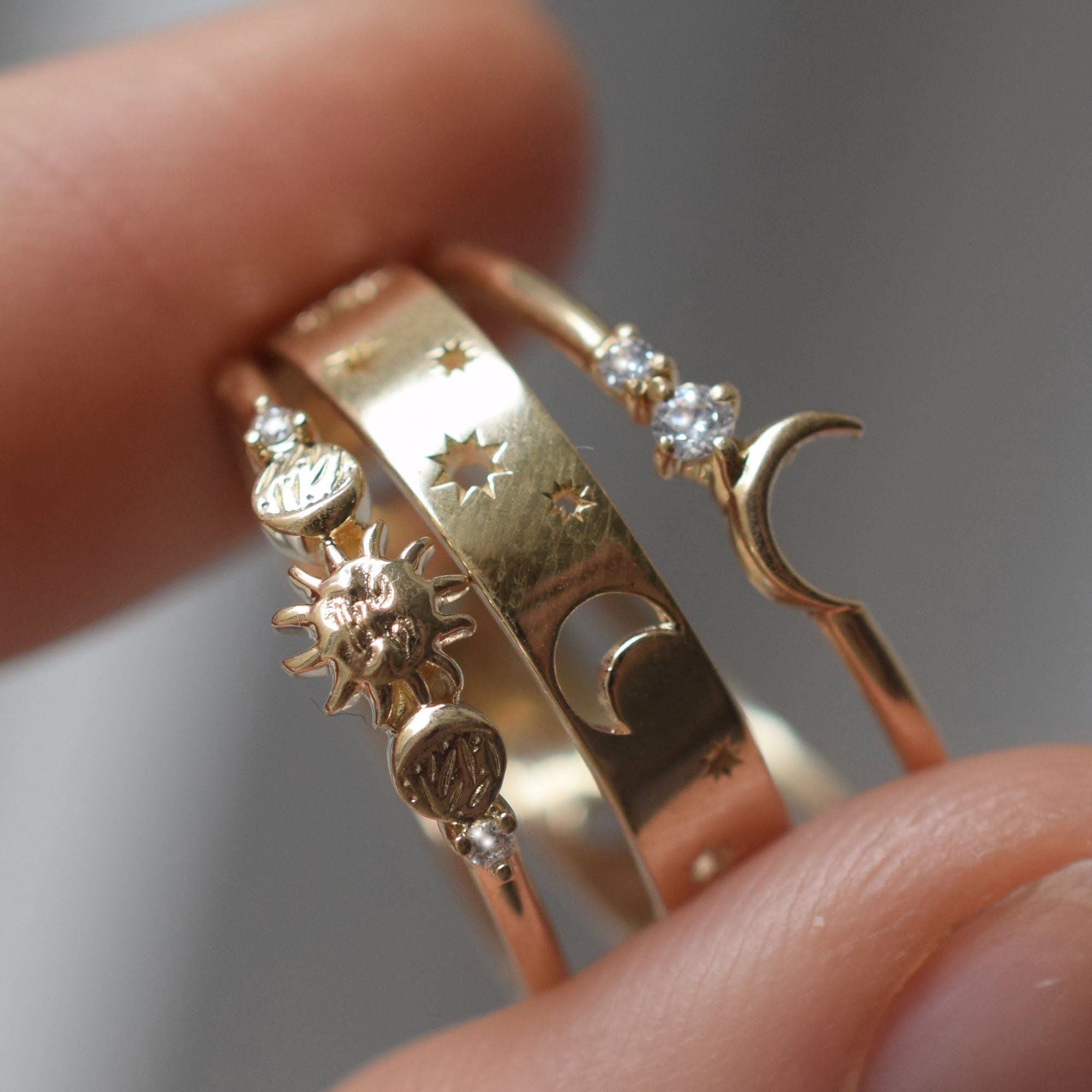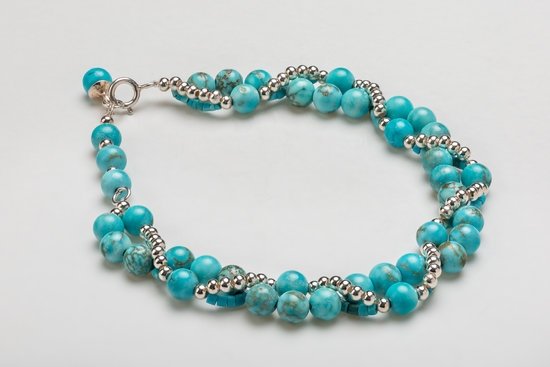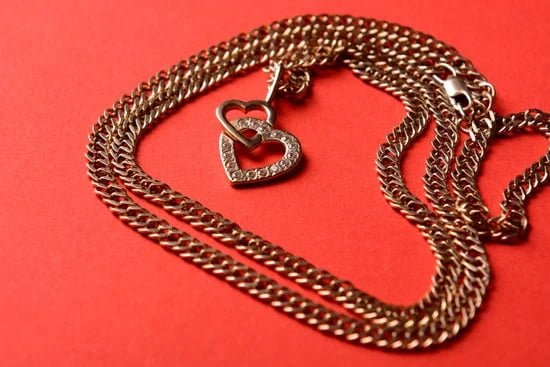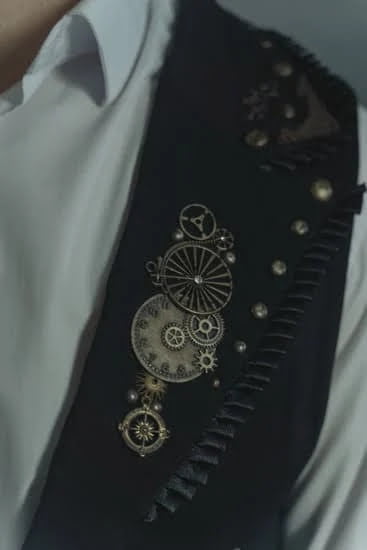Antique diamonds jewelry exudes a captivating allure that has enchanted collectors and enthusiasts for centuries. These unique pieces hold not only extraordinary beauty but also carry a rich historical significance. One key aspect in determining the authenticity and value of antique diamonds jewelry lies in its markings.
These delicate inscriptions, often found hidden within the folds or under settings, provide valuable clues about the piece’s origin, craftsmanship, and age. Understanding the significance of these markings is vital for any jewelry enthusiast or collector seeking to unlock the secrets held by these exquisite treasures.
Markings on antique diamonds jewelry serve as important indicators of both authenticity and provenance. They can reveal valuable information such as the maker’s mark, hallmarks denoting purity of metal, and even dates or symbols specific to certain periods in history.
By deciphering these markings, experts can determine the country of origin, designer or maker, and sometimes even previous owners of these rare gems. The detailed inscriptions serve as a window into the past, illuminating the origins and history of each precious piece.
Unveiling the reasons behind marking antique diamonds jewelry requires delving into its historical context. Throughout history, jewelers have employed various methods to mark their creations for reasons that go beyond mere signature or personalization. Markings often served practical purposes such as ensuring quality control or protecting against counterfeit pieces. They also denoted adherence to certain standards set by guilds or organizations regulating the trade during specific eras.
Decoding these intricate markings can be an intriguing endeavor for those passionate about antique diamonds jewelry. Astonishingly diverse types of marks exist, ranging from stamps and engravings to embossments and even tiny symbols etched on minute parts of a piece. Each form provides unique insights into a piece’s history, allowing collectors to truly appreciate its journey through time.
Understanding how these marks were made is another fascinating element in this pursuit. From traditional hand-engraving techniques to more modern laser etching, jewelers have adapted their methods over the centuries. Investigating these common marking techniques offers a deeper understanding of the craftsmanship behind each piece and can be instrumental in determining the age or significance of a particular artifact.
In upcoming sections, we will explore in detail the different types of markings found on antique diamonds jewelry, investigate common methods used to mark these pieces, and discuss how to identify whether a piece is marked. Furthermore, we will delve into the potential implications of unmarked antique diamonds jewelry and uncover whether they could be intentionally unmarked.
Finally, we will explore the value of marked antique diamonds jewelry in auctions and appraisals before concluding with an appreciation for the timeless beauty and historical significance that marked antique diamonds jewelry holds.
Understanding the significance of markings on antique jewelry
When examining antique diamonds jewelry, one cannot overlook the importance of markings. These engravings, stamps, or symbols provide valuable information about the piece’s origin, authenticity, and historical context. Understanding the significance of these markings is essential for collectors, enthusiasts, and anyone considering purchasing or selling antique jewelry.
One reason markings on antique diamonds jewelry are significant is that they often indicate the period in which the piece was made. For example, a ring with a marking that reads “Victorian Era” would indicate that it was crafted during the reign of Queen Victoria (1837-1901).
Similarly, a marking such as “Art Nouveau” would signify that the jewelry was made during this artistic movement that flourished from 1890 to 1910. These markings not only help date the piece but also provide insight into the design aesthetics popular during specific eras.
Markings on antique diamonds jewelry can also reveal its materials and quality. A common marking found on silver pieces is “925,” indicating that it is made of sterling silver containing 92.5% pure silver.
Additionally, gold jewelry may have hallmarks denoting its gold purity, such as “14K” for 14-karat gold or “750” for 18-karat gold. By understanding these markings and their corresponding standards for precious metals, buyers can make informed decisions about the value and quality of an antique jewelry piece.
Furthermore, markings on antique diamonds jewelry can offer clues about its provenance and authenticity. Certain marks may indicate where the piece was manufactured or who designed it. For example, a distinctive maker’s mark might identify renowned jewelers like Cartier or Tiffany & Co., adding prestige and value to the piece. Authentication marks, initials or symbols associated with well-known artisans from different regions or countries can also indicate a genuine antique treasure.
Unveiling the reasons for marking antique diamonds jewelry
Preservation of History and Authenticity
One of the primary reasons for marking antique diamonds jewelry is to preserve its history and ensure its authenticity. Antique jewelry often holds a significant historical value, as it reflects the artistry, craftsmanship, and design aesthetics of a particular era. The markings on these pieces can provide valuable information about their origin, manufacturer, and date of production, allowing collectors and enthusiasts to accurately trace their provenance.
By marking antique diamonds jewelry, whether through engravings or hallmarks, it becomes easier for experts to authenticate these pieces. These marks serve as a form of certification, verifying that the jewelry is indeed from the period it claims to be. They provide crucial evidence for buyers and sellers alike in confirming the genuineness and value of the piece.
Identification and Attribution
Another reason for marking antique diamonds jewelry is the need for identification and attribution in case of theft or loss. Jewelry marked with specific engravings or hallmarks can be easily recognized in trade markets or auctions if it goes missing. The unique marking acts as a distinct feature that helps authorities identify the piece if it resurfaces.
Moreover, markings allow historians and researchers to attribute certain styles or designs to specific time periods or regions. These attributions contribute to our understanding of historical fashion trends, manufacturing techniques, and cultural influences on jewelry-making.
Quality Assurance
Marking also plays a significant role in ensuring quality assurance for antique diamonds jewelry. Different markings indicate different levels of craftsmanship and materials used in the creation of these pieces. For example, certain symbols may signify higher carat weight gold or platinum settings, while others may indicate the use of genuine gemstones rather than imitations.
These markers help buyers make informed decisions when purchasing antique diamonds jewelry by providing an indication of its overall quality. By ensuring that these markings are present and accurate, collectors can trust that they are getting a genuine, high-quality piece of jewelry.
Understanding the reasons behind marking antique diamonds jewelry allows us to appreciate the significance and value of these markings. They not only preserve history and authenticity but also aid in identification, attribution, and quality assurance. In the next section, we will delve into the various types of markings found on antique diamonds jewelry.
Decoding the various types of markings found on antique diamonds jewelry
Antique diamonds jewelry often carries markings that provide valuable information about its origin, age, and craftsmanship. These markings can be found in various forms, each with its own significance. By understanding the different types of markings, collectors and enthusiasts can gain insight into the history and value of antique diamonds jewelry.
One type of marking commonly found on antique diamonds jewelry is a Hallmark. A Hallmark is an official mark or series of marks that indicate the metal content and quality of the piece. In the case of antique diamonds jewelry, a Hallmark may indicate that the piece is made from gold, silver, platinum, or another precious metal.
It also provides information about the purity of the metal. For example, a 14K Hallmark indicates that the piece is made from 14-karat gold.
Another type of marking found on antique diamonds jewelry is a maker’s mark or signature. These marks are unique to each jeweler or company and can help identify who created the piece. Maker’s marks are often small symbols or initials engraved on the back or inside of a jewelry item. Some well-known jewelers may have highly sought-after maker’s marks that add value to their antique pieces.
In addition to Hallmarks and maker’s marks, antique diamonds jewelry may also feature other types of markings such as patent numbers, registry marks, or country-specific symbols. Patent numbers indicate that a specific design element or technique used in creating the jewelry has been patented. Registry marks were used in certain countries to record pieces imported or exported through customs. Country-specific symbols can provide clues about where the piece was made.
| Type of Marking | Description |
|---|---|
| Hallmark | An official mark indicating metal content and quality |
| Maker’s Mark | A unique mark or signature identifying the jeweler or company |
| Patent Number | An indication that a design element has been patented |
| Registry Marks | Marks used to record imports and exports in certain countries |
| Country-specific Symbols | Symbols providing clues about the origin of the piece |
Decoding these markings requires careful research and expertise. Antique diamonds jewelry connoisseurs often consult reference books, online databases, and expert appraisers to decipher these marks and uncover the hidden stories behind each piece. By understanding the different types of markings found on antique diamonds jewelry, collectors can gain a deeper appreciation for their acquisitions and make informed decisions about their purchase or sale.
Investigating common methods used to mark antique diamonds jewelry
Engraving
One of the most common methods used to mark antique diamonds jewelry is engraving. Engraving involves carving or etching a design or inscription onto the surface of the jewelry piece. This can be done by hand or with the use of machinery. Engraving marks can vary in size, depth, and style depending on the time period and region in which the jewelry was made.
Hallmarks
Another method commonly used to mark antique diamonds jewelry is the use of hallmarks. Hallmarks are stamped into the metal of the jewelry piece and serve as a form of identification for the metal type, purity, and sometimes even the date and location of creation. These hallmarks can provide valuable information about the authenticity and origin of the piece.
Symbols or Initials
Symbols or initials are often used as a way to mark antique diamonds jewelry. These markings can range from simple monograms to intricate motifs specific to a particular maker or time period. These symbols or initials can be discreetly placed on the inside of a ring band, on the backside of a pendant, or in another inconspicuous location.
It is important to note that while these are common methods used to mark antique diamonds jewelry, they are not foolproof guarantees of authenticity. Counterfeiters have become increasingly skilled at replicating markings, so it is crucial for buyers and collectors to do their due diligence in researching and verifying any markings present on antique pieces.
How to identify if a piece of antique diamonds jewelry is marked
As a lover of antique diamonds jewelry, it is essential to know how to identify if a piece is marked. The markings on antique jewelry hold significant historical and monetary value, providing clues about its authenticity and origin. By understanding the various types of markings commonly found on these pieces, collectors and enthusiasts can gain insight into their individual histories.
There are several ways to identify if a piece of antique diamonds jewelry is marked. One of the most common methods is by examining the back or underside of the piece for any inscriptions or engravings. These markings can include initials, dates, hallmarks, or even the name of a renowned jeweler.
Another way to determine if a piece is marked is by using a magnifying glass or a loupe. Carefully examine the surface of the jewelry for any tiny symbols or numbers that may indicate its authenticity or metal content.
Additionally, some antique diamonds jewelry may have hidden clasps or compartments that contain engravings or marks. It is crucial to explore every part of the piece thoroughly before concluding whether it is marked or not.
| Marking | Significance |
|---|---|
| Hallmark | Indicates purity and authenticity |
| Initials | Suggests ownership or commemoration |
| Date | Provides an approximate age for the piece |
| Jeweler’s Name | Influences value and collectability |
Overall, identifying if a piece of antique diamonds jewelry is marked requires careful examination and attention to detail. It is essential to remember that not all pieces will be marked, but for those that are, the markings can provide valuable insights into their history and value. By understanding how to identify these markings, collectors can enhance their appreciation for the timeless beauty of antique diamonds jewelry.
Exploring the potential implications of unmarked antique diamonds jewelry
The potential implications of unmarked antique diamonds jewelry are significant, as the absence of markings can affect both the value and authenticity of a piece. Markings on antique jewelry often serve as a form of identification, providing important information about its origins, age, and materials. When an antique diamonds piece lacks these markings, it can raise questions about its history and legitimacy.
One implication of unmarked antique diamonds jewelry is the difficulty in determining its true value. Markings such as hallmarks or maker’s marks help buyers and appraisers establish the quality and craftsmanship of a piece. Without these identifying marks, a jeweler may have to rely solely on their expertise and knowledge of antique diamonds jewelry to assess its worth. This can lead to greater uncertainty and potential discrepancies in pricing.
Furthermore, the absence of marks on antique diamonds jewelry can also raise suspicions about its authenticity. In the world of antique jewelry, counterfeits or reproductions are not uncommon. Legitimate markings provide assurance that a piece is genuine and not a modern imitation created to mimic an older style. As such, unmarked pieces may be met with skepticism by collectors and experts who are cautious about investing in potentially fraudulent or misleading items.
To help bridge this gap between marked and unmarked antique diamonds jewelry, there are certain ways to ascertain the authenticity and value despite the lack of visible markings. One method is through thorough examination by a reputable appraiser or gemologist who specializes in identifying antique pieces. They will closely examine factors such as design details, construction techniques, gemstone settings, and overall quality to determine if the piece is consistent with the time period it claims to originate from.
It is also important for collectors or buyers to research the history and provenance of any unmarked antique diamonds jewelry they come across. Documentation such as receipts or certificates from previous owners can shed light on its background and offer supporting evidence for its age or origin.
Uncovering the truth
Antique diamonds jewelry holds a certain charm and allure that is unmatched by modern pieces. Part of the fascination with these pieces lies in their history and the stories they carry. One aspect that has captivated collectors and admirers alike is the presence of markings on antique jewelry.
These markings not only add to the charm but also hold great importance in determining the authenticity, age, and value of the piece. However, there is a question that often arises – can antique diamonds jewelry be unmarked intentionally?
The answer to this question is both yes and no. In some cases, it is indeed possible for antique diamonds jewelry to have its markings intentionally removed or obscured. This can be done for various reasons, such as attempting to increase its value or disguising its true provenance. Restoration work or cleaning methods may inadvertently remove or fade these marks as well.
However, it is important to note that intentional removal of markings from antique diamonds jewelry is generally discouraged and frowned upon within the jewelry industry. Not only does it diminish the historical significance of the piece, but it also raises doubts about its authenticity, which could greatly affect its value. Most reputable dealers, collectors, and enthusiasts prioritize preserving the integrity of these vintage pieces and would avoid altering them in any way.
It should also be mentioned that while markings are important indicators of authenticity and value, their absence does not necessarily mean a piece is unmarked intentionally. Throughout history, many vintage pieces were simply not marked due to various factors like limited technology at the time or individual preferences of jewelers. Therefore, when evaluating an antique diamonds jewelry piece without markings, alternative methods must be employed to ascertain its true worth and origin.
The value of marked antique diamonds jewelry
When it comes to antique diamonds jewelry, the presence of markings can greatly impact its value. Auctions and appraisals play a crucial role in determining the worth of these pieces that hold both historical and sentimental significance. Knowing how to navigate these processes can help ensure that you get the best return on your investment or accurately determine the value of a potential purchase.
Auctions provide a unique platform for individuals to buy and sell marked antique diamonds jewelry. These events attract collectors, enthusiasts, and investors from around the world who are willing to pay top dollar for rare and exceptional pieces. The presence of markings on antique jewelry not only validates its authenticity but also provides vital information about its origin, age, and craftsmanship. This knowledge allows bidders at auctions to make more informed decisions based on their individual interests and preferences.
Appraisals are another important aspect of assessing the value of marked antique diamonds jewelry. A trained appraiser can examine a piece thoroughly to determine its quality, condition, rarity, and market demand.
The presence of markings contributes significantly to this evaluation process as they indicate important details such as the metal purity, gemstone carat weight, manufacturer’s signature or hallmark, and even possible provenance. An accurate appraisal ensures that both buyers and sellers have a fair understanding of the monetary worth of an antique piece before entering into any financial transactions.
Whether you choose to participate in auctions or seek professional appraisals, it is essential to understand that marked antique diamonds jewelry tends to command higher prices due to its documented history and authenticity. These pieces connect us to a rich past filled with stories waiting to be uncovered. By recognizing the value placed on marked antique diamonds jewelry through auctions and appraisals, we can better appreciate their timeless beauty while making informed decisions regarding their acquisition or sale.
Conclusion
In conclusion, the allure of antique diamonds jewelry lies not only in its timeless beauty but also in its historical significance. The markings found on these pieces serve as important indicators of their authenticity, craftsmanship, and age. They provide valuable insights into the rich history and provenance of each piece, allowing collectors and enthusiasts to truly appreciate the artistry behind them.
Understanding the significance of these markings is crucial for anyone interested in antique diamonds jewelry. From hallmarks that indicate where and when a piece was made to maker’s marks that identify the individual or company responsible for its creation, these markings add a layer of authenticity and enhance the value of the jewelry.
The various types of markings found on antique diamonds jewelry highlight the diversity within this category. Whether it be intricate engravings or delicate stamps, each marking tells a unique story about the piece. By learning about these different types of markings and familiarizing oneself with their characteristics, one can better navigate the world of antique diamonds jewelry and appreciate their historical importance.
It is important to note that while most antique diamonds jewelry will bear some form of marking, there may be instances where a piece is unmarked intentionally. This could occur for a variety of reasons such as an attempt to deceive buyers or due to damage over time.
However, it is imperative for collectors and buyers to be cautious when dealing with unmarked pieces, as they may lack the same level of credibility and provenance as those that are properly marked.
In summary, marked antique diamonds jewelry serves as a testament to its historical significance and adds value not only monetarily but also in terms of appreciation for craftsmanship. These markings provide invaluable insights into the history, origins, and makers behind each piece, allowing us to connect with our past through their timeless beauty.
As we continue to explore and preserve these treasures from bygone eras, let us remember that it is through understanding and honoring these markings that we can truly appreciate their enduring charm.
Frequently Asked Questions
How can you tell an antique diamond?
Identifying an antique diamond can be done by examining certain characteristics that may indicate its age. One distinctive feature of antique diamonds is the cut. Older diamonds were typically cut by hand, resulting in a slightly different shape compared to modern diamonds. For example, antique diamonds often have a more rounded outline or a fancy shape like an old mine cut or rose cut.
Additionally, antique diamonds may display subtle differences in facets and proportions due to variations in cutting techniques throughout history. Another way to identify an antique diamond is by examining its setting. Antique diamonds were often set in elaborate and intricate designs that reflect the style of the era they were made in.
Does antique jewelry have markings?
Antique jewelry may or may not have markings depending on the time period and country of origin. In some cases, you may find specific hallmarks or maker’s marks on antique jewelry that provide information about its origin and craftsmanship. Hallmarks are official stamps indicating the metal content and quality, while maker’s marks are unique identifiers used by individual jewelers or companies.
However, not all antique jewelry will have these markings as regulations and practices varied across different regions and time periods. Even without markings, other characteristics such as the design, materials used, and construction methods can help authenticate and date antique jewelry.
How can you tell if a diamond ring is antique?
Determining if a diamond ring is antique requires examining various factors beyond just the appearance of the diamond itself. Firstly, consider the overall design of the ring. Antique diamond rings often feature intricate settings with detailed filigree work or embellishments indicative of their era’s style trends such as Art Deco, Victorian, Edwardian, or Retro periods. These design elements can provide important clues about its age and authenticity.
Secondly, inspecting the mounting can be informative as well since it may exhibit signs of wear consistent with its age such as thinning of prongs or delicate engravings that have faded over time. Lastly, if possible, seeking documentation or provenance for the ring, such as certificates of authenticity or historical records, can further confirm its antique status. Consulting with a reputable antique jewelry expert or appraiser may also help in verifying the age and value of a diamond ring.

Welcome to my jewelry blog! My name is Sarah and I am the owner of this blog.
I love making jewelry and sharing my creations with others.
So whether you’re someone who loves wearing jewelry yourself or simply enjoys learning about it, be sure to check out my blog for insightful posts on everything related to this exciting topic!





